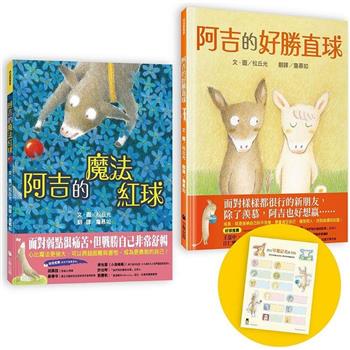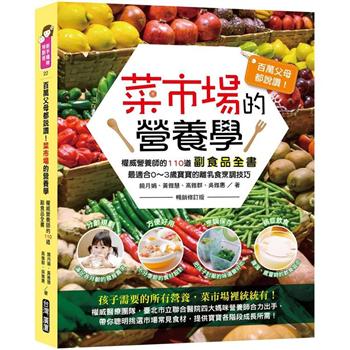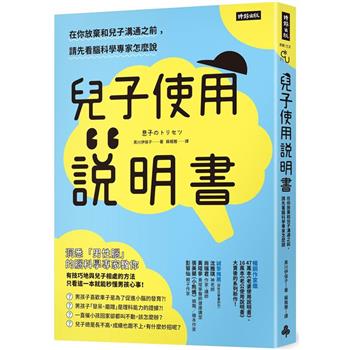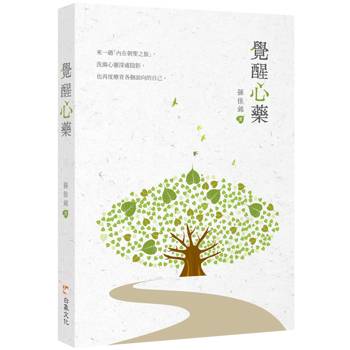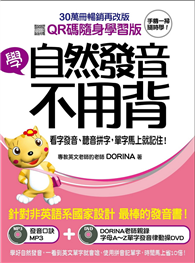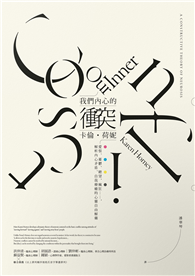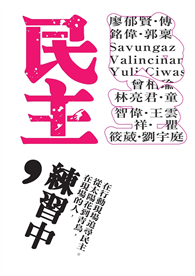Preface
The field of translation criticism has been a part of applied translation studies and aims at providing a value judgment for translated texts. This interest in the study of translation quality assessment has led to the development of a variety of schemes and approaches for a contrastive analysis of the source text and its translations. In any analysis of literary translation, whether the purpose is a comprehensive translation comparison or quality assessment, setting up clear evaluation criteria or assessment parameters is of great importance for establishing a lucid evaluative framework in the analysis of the specific characteristics found in a literary text. As Beatriz Rodríguez in Literary Translation Quality Assessment contends, “Translation criticism requires the implementation of some assessment criteria and of a systematic scheme of analysis of the two texts to reach the evaluation of the target texts” (6). Otherwise, the evaluation or analysis will only amount to intuitive comments on the shifts, deviations, or mismatches of the textual profile for the source and the target texts.
Since the 1960s, the range of theoretical stances has led to the development of different approaches for literary translation analysis and quality assessment. The earlier linguistic- and discourse-oriented functional approaches quite contrasted with the more recent discourses on the cultural or corpus-based approaches. It is thus reasonable to assume that a universal framework that can be applied in the evaluation of all kinds of literary translated works does not exist. This realization exposes the practical problem of literary translation analysis: the evaluation criteria and the precise framework necessarily need to be established in different analyses due to the particular genre and stylistic devices each text contains and showcases. Further research on the methods of literary translation analysis and quality assessment is indeed necessary.
The scholarly approaches to literary translation from a stylistic viewpoint have noted that it is essential to use the expressive function and the aesthetic effect of a literary text as a prerequisite for the practice of translation (see, for instance, Shen 1998: 6-10, Boase-Beier 2006: 4-6, Parks 2007:14). When it comes to the analysis of literary translation from a stylistic perspective, however, the current approaches do not have much to offer in terms of analytical framework, procedure, or means. Bearing this problem in mind, this book proposes a new evaluative model to the analysis of literary translated work from a stylistic perspective. In order to show the applicapability of this evaluative model to the works of diverse literary style, the approach proposed here is employed to studying the Chinese translation of two modernist works stylistically different in nature. The investigation examines how effective the Chinese translators are in dealing with the particular diegetic voices, in particular ideolects and paralanguage, and representing the narrators and characters’ speeches and thoughts in the translation. Whereas little attention has been paid toward investigating the pragmatic style in fictional translation, the purposes for writing this book then are the following:
(1) Reflect on the assessment models and methods employed in the evaluation of literary translation and devise a dual approach that conjoins relevance theory with cognitive models for a precise translation-oriented stylistic analysis.
(2) Conduct emperical studies to unveil the actual pragmatic stylistic differences between the original text and the translated texts.
(3) Employ the concept of iconicity to develop new creative translation strategies and solutions.
The main concern of this book is with translators and their translation practice. It is hoped that readers from both industry and the academia will be inspired by this study to think more deeply about the relevant and practical issues of how to deal with literary stylistic devices and represent their idiosyncrasies in translation.
The book is organized into three sections that cover the theoretical research and two case studies. The first section has three chapters. Chapter 1 reviews the contemporary translation theories and current methodological models for literary translation analysis and criticism. A single model that offers an evaluative procedure for accessing the translator’s rendering of literary style has not yet been devised. In line with Ernst-August Gutt’s proposition that translation is not merely a mechanical process of decoding and coding the message in the source text in equivalent terms, Chapter 2 reviews a set of relevance-theoretic criteria and the possible applications of Relevance Theory to the quality assessment of literary translation. However, when justifying the translator’s choice and decision on interpreting and delivering linguistic peculiarities embedded in a literary text, the analysis in the relevance-theoretic perspective is usually oriented around impressionistic or imprecise intuition. Therefore, Chapter 3 proposes a dual approach in which relevance theory is conjoined with cognitive models to conduct a translation-oriented stylistic analysis of William Faulkner’s and Edith Wharton’s novels.
The second section of the book (Chapters 4-7) focuses on the translation of heteroglossia in Faulkner’s The Sound and the Fury. Taking the form of code-switching between blacks and whites, this novel is appreciated for a type of literary heteroglossia that serves a performed ideology. In terms of the poetic function of narrative style, Faulkner’s use of a variety of idiolects as narrative voices conveys the social origin and the disposition of each character who is speaking, for example, a more standard southern dialect for the white middle class. This section examines two Chinese translations of William Faulkner’s The Sound and the Fury and focuses on how the polyphonic structure, the idiosyncratic diction, and the style of each narrator in the novel are dealt with and represented in each translation. This examination is organized around the question of narrative voice: What do we know about the textual narrator? If that narrator has a voice, how does that voice become manifest in the translation? By way of a detailed analysis, the reader will see both translators’ renderings as exhibiting apparent changes in diction and note that an understanding of the particular linguistic means employed by Faulkner to construct each narrator’s voice is essential for the translator to achieve stylistic correspondence and connection to the particular diction used in the original.
The third section (Chapters 8 & 9) focuses on the translation of paralanguage and nonverbal style in Edith Wharton’s The Age of Innocence. Paralanguage as intonational markers became for Wharton an effective narrative strategy and engaging medium for characterizing various speech styles. Wharton also showed much initiative in depicting nonverbal communicative activities through which the complexity of psychological states and the subtlety of physical movement were jointly configured to portray the particular attributes of her characters and their motives and attitudes. Such vocal and nonverbal orchestration using paralinguistic description serves as communicative clues and presents the translator with a rich potential for interpretation. The study presented in this research examines the particular linguistic features of heteroglossia as they are encoded in the form of paralanguage and measures the stylistic effects of the linguistic devices that Wharton has used in constructing the diegetic voices. How the translators in Taiwan deal with these paralinguistic vocal features and nonverbal gestures and whether their renderings do take on functional and expressive significance are the center and focus of investigation.
Exploring the Diverse Translating Nature of Narrative Aesthetic: New Perspectives on Fictional Translation is geared toward translation scholars, instructors of literary translation, student translators, and professional practitioners, all of whom are concerned with increasing the stylistic quality of literary translation. The major point this book will make is the usefulness of stylistic approach to the analysis of literary translation and the necessity of incorporating stylistic approaches into any translation-oriented text analysis, i.e, “a type of reading adapted to translation,” that can sharpen one’s sensitivity to the workings of linguistic means and their stylistic functions (Boase-Beier, Stylistic Approaches, 24). It is hoped that this book will provide new insights into the role of style in both the practice and the ongoing analysis of literary translation.
以上內容節錄自《Exploring the Diverse Translating Nature of Narrative Aesthetic: New Perspectives on Fictional Translation》 Yi-ping Wu(吳怡萍)◎著.白象文化出版
| FindBook |
有 3 項符合
Exploring the Diverse Translating Nature of Narrative Aesthetic: New Perspectives on Fictional Translation的圖書 |
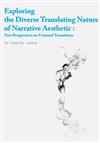 |
Exploring the Diverse Translating Nature of Narrative Aesthetic: New Perspectives on Fictional Translation 作者:吳怡萍 出版社:白象文化事業有限公司 出版日期:2014-04-01 語言:繁體書 |
| 圖書選購 |
| 型式 | 價格 | 供應商 | 所屬目錄 | 二手書 |
$ 45 |
二手中文書 |
$ 246 |
華文文學研究 |
$ 252 |
英文 |
|---|
| 圖書館借閱 |
| 國家圖書館 | 全國圖書書目資訊網 | 國立公共資訊圖書館 | 電子書服務平台 | MetaCat 跨館整合查詢 |
| 臺北市立圖書館 | 新北市立圖書館 | 基隆市公共圖書館 | 桃園市立圖書館 | 新竹縣公共圖書館 |
| 苗栗縣立圖書館 | 臺中市立圖書館 | 彰化縣公共圖書館 | 南投縣文化局 | 雲林縣公共圖書館 |
| 嘉義縣圖書館 | 臺南市立圖書館 | 高雄市立圖書館 | 屏東縣公共圖書館 | 宜蘭縣公共圖書館 |
| 花蓮縣文化局 | 臺東縣文化處 |
|
|
圖書介紹 - 資料來源:TAAZE 讀冊生活 評分:
圖書名稱:Exploring the Diverse Translating Nature of Narrative Aesthetic: New Perspectives on Fictional Translation
探索人物與敘事者多樣性語用風格,帶動文體風格翻譯之研究風潮
◎以小說敘事聲音的多樣性及複雜性進行實證研究
◎文學翻譯批評理論的反思與重構
◎語言臨摹性理論於翻譯策略及翻譯技巧的開發
本書主要探討文體風格翻譯評析的可行性,並以福克納《聲音與憤怒》中個人習語作為敍事聲音的翻譯與華頓《純真年代》小說對話中周邊語言作為敍事聲音的翻譯進行實證研究。針對文學翻譯分析與批評,當代西方翻譯學者與其所帶來不同的視角,已為文學翻譯批評理論及方法論建構較為系統且操作性強的評析模式,因此研究者在專書的第一部分概述各家翻譯批評原理與文學翻譯批評方法論,並列舉其代表學者於文學翻譯批評之具體實踐,但這些批評的原理及方法論,對於文學作品之文體風格翻譯分析,尚付之闕如。有鑑於此,本書透過結合關聯理論與認知文體學當中的前景化理論,設計出針對文體風格研究的分析框架,並探究文體風格翻譯批評的本質、評析方法,以及與文學翻譯教程做結合之必要性。
作者簡介:
Yi-ping Wu is Associate Professor of English Department at National Kaohsiung First University of Science and Technology, Taiwan. Her research interest has been on modernism, American ethnic literature, and literary translation.
章節試閱
Preface
The field of translation criticism has been a part of applied translation studies and aims at providing a value judgment for translated texts. This interest in the study of translation quality assessment has led to the development of a variety of schemes and approaches for a contrastive analysis of the source text and its translations. In any analysis of literary translation, whether the purpose is a comprehensive translation comparison or quality assessment, setting up clear evaluation...
The field of translation criticism has been a part of applied translation studies and aims at providing a value judgment for translated texts. This interest in the study of translation quality assessment has led to the development of a variety of schemes and approaches for a contrastive analysis of the source text and its translations. In any analysis of literary translation, whether the purpose is a comprehensive translation comparison or quality assessment, setting up clear evaluation...
»看全部
作者序
The field of translation criticism has been a part of applied translation studies and aims at providing a value judgment for translated texts. This interest in the study of translation quality assessment has led to the development of a variety of schemes and approaches for a contrastive analysis of the source text and its translations. In any analysis of literary translation, whether the purpose is a comprehensive translation comparison or quality assessment, setting up clear evaluation criteria...
»看全部
目錄
Acknowledgements
Preface
Part I Theoretical Basis for Investigating Fictional Translation
Chapter 1 Models and Methods for Assessing Literary Translations: A Comparative Study
1.1 The Comparative Model and Contrastive Analysis
1.2 The Process-Oriented Model and Interpretive Analysis
1.3 The Causal Model and Explanatory Analysis 11
1.4 A Summarizing Comparison and the Issues in Question
1.5 The Present State of the Research and Study Objectives
Chapter 2 Assessment of Liter...
Preface
Part I Theoretical Basis for Investigating Fictional Translation
Chapter 1 Models and Methods for Assessing Literary Translations: A Comparative Study
1.1 The Comparative Model and Contrastive Analysis
1.2 The Process-Oriented Model and Interpretive Analysis
1.3 The Causal Model and Explanatory Analysis 11
1.4 A Summarizing Comparison and the Issues in Question
1.5 The Present State of the Research and Study Objectives
Chapter 2 Assessment of Liter...
»看全部
商品資料
- 作者: 吳怡萍
- 出版社: 白象文化事業有限公司 出版日期:2014-04-01 ISBN/ISSN:9789865780852
- 語言:繁體中文 裝訂方式:平裝 頁數:254頁
- 類別: 中文書> 華文文學> 華文文學研究
|
